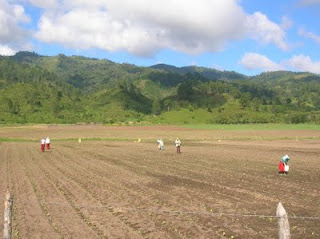PACs newest project over the last 3 years or so has been to increase the production of cacao in Nicaragua. The climate is ideal here, it's just that farmers lacked the knowledge and marketing skills. Cacao has very quickly become a great cash crop for 100s of poor farmers, with much hope to expand. Here are a few snapshots of the process...
 Farmers bring in freshly harvested cacao.
Farmers bring in freshly harvested cacao. It's weighed.
It's weighed. And the producer gets paid by the collector. This farmer receieves about $50 a week, a considerable
And the producer gets paid by the collector. This farmer receieves about $50 a week, a considerableamount considering average income here is around $20 per week.
Of course he has a family to feed as well.
 Finding out more about cacao from producers--there is
Finding out more about cacao from producers--there is a definite excitement about cacao here!
 Cacao in crates for the first 8 days of fermentation.
Cacao in crates for the first 8 days of fermentation. Then moved in a super hot green house to ferment another 8 days.
Then moved in a super hot green house to ferment another 8 days.Wilmur, a cacao producer himself that collects cacao from 15
other local producers in order to ferment it, then resell it.
 PAC takes pickup loads of cacao ready to be exported to their storehouses where
PAC takes pickup loads of cacao ready to be exported to their storehouses whereit is then sold to an exporter. This pickup load is about
1500 pounds, worth about $1500.
(In comparison, coffee at this stage would be worth about $900).

















